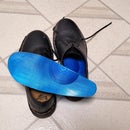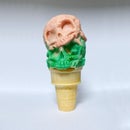Introduction: 3D Print Cute Cat Self Watering Planter
Does your little one have a green thumb? A self-watering critter planter is an awesome way to introduce your child to gardening. In this instructables I will introduce how to design a cute Peropon self watering inspired cat planter in Tinkercad with a tongue that will soak up water to feed the plants! With a little sunshine, your little one will be gardening in no time!

What you will need:
- Tinkercad (Free)
- 3D Printer
- Paint (optional)
- Primer (optional)
- Sandpaper
- Craft Felt Material
- Scissors
- A plant or soil with seeds
Step 1: Set Up System Units
Designing for 3D printing requires to keep in mind that your object will be a physical object with weight, size and constraints. Even if your object is coherent and looks to be at the dimensions you wish on the screen, it is really important to check if the 3D printed object will match your expectations and the machine constraints.
In Tinkercad, click on "Edit Grid". Change the units to your preferred choice of measurement: either millimeters or inches. Change the width and height to match closely to your printer's build volume. Unfortunately Tinkercad does not have a Length input for build volumes that are not squared.
Step 2: Building a Character Body
1. Start by creating a cylinder to the diameter and height of your chosen plant or liking.
2. Set the Cylinder shape to be a "Hole". This will be the cutout shape used to create the area where the plant will reside.

3. Create a sphere. Align the shape to the center of the cylinder. Use the scale tools to manipulate the sphere into a body shape of your liking.

4. Create two smaller spheres. Move these to the back of the body. These shapes will be the hindquarters of the planter.

5. Create 4 half sphere shapes. Move two of the shapes to under and slightly in front of the hindquarter shapes. Move the other two to the front of the body. Position the feet so as if your critter planter to be is "crouching".
6. If you want to create a tail you can do so by intersecting a series of spheres. Places these spheres on the hindquarters of the planter.

Step 3: Building a Character Face
1. Add a large sphere to the front of the body.

2. Create smaller spheres for they eyes, nose, and mouth.

3. Create 2 paraboloid shapes. Scale the shapes into a resemblance of animal ears and move to the sides of the head. These will be the outer ears.

4. Create 2 half sphere shapes. Scale shapes to be a cutout for the inner ear. Set shape to be a "Hole".

5. Select inner and outer ear shapes. In the menu click Group to combined the shapes together and cut out the inner shapes from the outer.

6. Select all shapes of the head. Click Group to combined the shapes.

Step 4: Build a Dish
1. Create a cylinder shape.
2. Create a half sphere with the diameter smaller than the cylinder. Rotate the shape so the spherical part is inside the cylinder. This will be the bowl of the dish. Make sure there is a wall thickness between the bottom of the sphere and the spherical part of the half sphere. Set the half sphere shape to be "Hole".
3. Group the two shapes together.
Step 5: Prep the Design
1. Select all shapes of the critter planter (don't select the bowl dish). Group all of the selected shapes to combine them.

2. Create a box and move it to the location of the critter's mouth. Scale the box into a thin rectangle that reaches from the opening of the mouth to the opening the the planter.

3. Angle the rectangular down into the base of the planter. Group the shape with the planter.

4. Create a cylinder and move it into the head. Scale the shape as needed, and rotate the shape slight toward the opening of the planter. Change the shape to be a "Hole". Group the shape to the planter.

5. Create a long rectangle and move the shape below the planter feet so the planter sits on top. Set the shape as a "Hole".

6. Group the rectangle to the planter. This will give the planter a flat bottom for easier printing.

7. The design is finished. Export the planter and the bowl as two separate pieces for easier print.

Step 6: Print the Design
Load the planter design into a slicer software of your choice. Turn on print supports. For large designs I like to print at a 0.3 mm layer height with 15% fill to be able to print the designer faster. Feel free to use any settings of your choosing.
Step 7: Post Processing the Design (optional)
After the design and bowl is printed, remove the print supports. Take this time to sand down any ugly overhangs and imperfections of the printed pieces.

Due to the low poly nature of Tinkercad shapes, you can choose to use a few coats of primer to smooth out the design. I usually will wet sand a design that I have primer on afterwards with water and sand paper. The main advantage of wet sanding is the fact that it produces less dust, longer life of the sandpaper and allows one to obtain a smooth surface compared with dry sanding.

Once the design is prepped to your liking, feel free to give your planter a little color. My favorite paints to use are Folkart multi-surface or Folkart enamel acrylic paints that can be found in craft stores. If you do not paint or use primer on the design, I still recommend adding at least a solid color of paint. This will seal the 3d print from water leakage.

Step 8: Create the Tounge
Take your felt material and cut out a long strip that reaches from inside the planter to out the mouth and into the bowl. Cut the width to match the width of the mouth opening. Insert the tongue into the planter.
Step 9: Get Planting
Once the tongue is added, soak the fabric with water and then add your plant with soil. Place the planter's tongue into the bowl and fill the bowl with water. Water will be drawn up the fabric tongue and into the planter as needed. Don't forget to check every few days to see if the bowl needs to be filled.
Step 10: Project Files
Completed 3d Project file can be found on Tinkercad.com: https://www.tinkercad.com/things/brgz8dz6TAG#/ and Myminifactory.com: https://www.myminifactory.com/object/3d-print-self-water-cat-planter-67606





